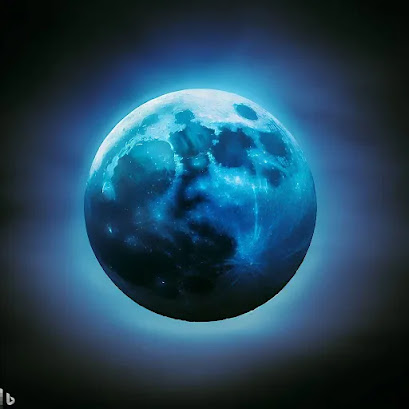Introduction:
Enthusiasts of stargazing and astronomy are in for an extraordinary treat this month as an uncommon convergence of a super blue moon and the majestic presence of Saturn graces the night sky. This captivating event occurs as the second full moon of the month, also known as the blue moon, coincides with the year's first super blue moon. Skywatchers can mark their calendars for either August 30 or 31 to catch this celestial spectacle, depending on their location.
The Phenomenon Unveiled:
Contrary to its name, the term "blue moon" does not imply the moon's color. Instead, it signifies the occurrence of a second full moon within a single calendar month. In this case, August's second full moon not only holds the title of a blue moon but also boasts the distinction of being the first super blue moon of the year. During this event, the moon reaches its closest proximity to Earth, a mere 357,344 kilometers away, resulting in an enhanced visual display of its magnificence.
Enhancing the allure of the night sky, Saturn, with its striking rings, graces the scene as a luminous point positioned approximately five degrees above the moon's upper edge. This dual presence of Saturn and the moon promises a spellbinding tableau that's not to be missed.
It’s a bird! 🦅 It’s a plane! ✈️ It’s a… supermoon! 🌕 Don’t forget to check out the “super blue moon” on Aug. 31. It is called a super blue moon because it is a supermoon and the second full moon in a single calendar month. Learn more: https://t.co/cA0Y9UQS88 pic.twitter.com/RDOcsB6fIm
— NASA Space Place (@NASAspaceplace) August 28, 2023
Understanding the Super Blue Moon:
The concept of a super blue moon is a direct consequence of the moon's elliptical orbit around Earth. When the moon approaches its closest point to our planet, referred to as perigee, it takes on the classification of a super moon. This proximity gives rise to a larger, more illuminated appearance compared to its regular phases.
The term "blue moon," on the other hand, is applied when two full moons grace the skies within a single month. It's important to note that this label has no connection to the moon's color; instead, it denotes a remarkable lunar occurrence. A super blue moon stands out by appearing roughly 14 percent larger than a standard full moon, presenting a truly breathtaking sight for observers.
Rarity and Significance:
While glimpsing a blue moon or super moon isn't an exceptionally rare occurrence, the alignment of both phenomena is a notably infrequent event, happening only about once every ten years according to NASA. This rarity underlines the significance of this specific super blue moon event, taking place on August 30 (IST).
Looking ahead, the next occurrence of a super blue moon isn't anticipated until January 2037. This scarcity magnifies the charm of the upcoming celestial performance, emphasizing the importance of setting aside time to witness this breathtaking event.
Conclusion:
As August comes to a close, the cosmos has a remarkable display in store – an extraordinary super blue moon accompanied by the radiant presence of Saturn. Despite the name, "blue moon" doesn't denote the moon's hue; instead, it marks the second full moon of the month, which also takes on the distinction of being the first super blue moon of the year due to its close approach to Earth. Sharing the stage with Saturn adds an extra layer of magnificence to this celestial show. Whether you're an avid stargazer or someone with a keen eye for the universe's wonders, don't miss out on this captivating event. Remember, the next super blue moon won't grace the skies until January 2037, making this celestial occurrence genuinely a once-in-a-blue-moon experience – or should we say, a once-in-a-super-blue-moon phenomenon!


